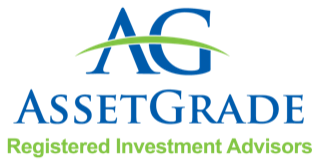
401K & IRA Loans & Withdrawals – The Last Resort
By: Patrick Cote
While created with good intentions, I have mixed feelings about the recent CARES Act provisions allowing for $100,000 in CRDs (coronavirus-related distributions) from retirement accounts like 401Ks and IRAs. These provisions are designed to help people who are facing a cash shortage now and have savings in 401Ks or IRAs.
The CRDs are withdrawals from your retirement plans, which means you will be reducing the amount of money you have saved for retirement. The CARES Act also increased to $100,000 the maximum loan permitted from a 401K (previously it was $50,000). The maximum loan amount allowed is 50% of the vested balance of the 401K. The 401K loans are different from CRDs, as they force you to put the money back in your retirement plan or face tax consequences. My concern stems from the fact that the true costs are so high that withdrawing or borrowing from your retirement plan(s) would only be attractive in the most extreme scenarios. If you are younger than retirement age and are facing a current short-term cash squeeze, there are several more attractive options to access funds.
The Act allows for people to take out up to $100,000 in CRDs from their retirement accounts (total is per person, not per account). It is still taxable, although that income and the associated tax can be spread over three years (first year must be 2020). If this year will still be a high income year for you, it may not be attractive to do so in 2020.
The CRD withdrawals end up being much more expensive than most people realize for three reasons. The first is that you are locking in today’s lower stock market prices by selling now. The second is that you are only receiving the after-tax amount of the withdrawals, because they are taxed (it does help slightly that they are waiving the 10% penalty). For a $100,000 withdrawal, you would only have the after-tax amount, call it $60,000 - $70,000, depending on your tax situation over the next few years. The third reason CRD withdrawals are expensive is the opportunity cost of missing a potential rebound as the market recovers. Most of the market recoveries happen within a few years of major declines, so it is expensive to miss a 30% recovery (which would be a $30,000 gain on $100,000 invested). Another hidden challenge is that many folks will be years behind in their savings path because they would now have to work hard just to replace the withdrawn $100,000 let alone save the additional amount they would normally have saved those years.
It can be a little better to get a 401K loan, as you will be taking the money out of the 401K plan tax-free for now and immediately setting up a plan to repay it over five years. However, repayment may prove challenging - if you do not repay the 401K loan, it becomes taxable as well.
One alternative is to secure a HELOC (home equity line of credit) if at all possible and if you have equity in your home. With the HELOC, interest would only be charged for what you need - for example, 5% per year for $100,000, so $5,000 per year, which would be much less expensive that the CRD or 401K loan.
The bottom line is that you would only want to do the CRD withdrawals or a 401K loan if no other option is available. It is worth the hassle to go through the HELOC process, even if you have to chase around to get quotes and go through a lot of paperwork.

